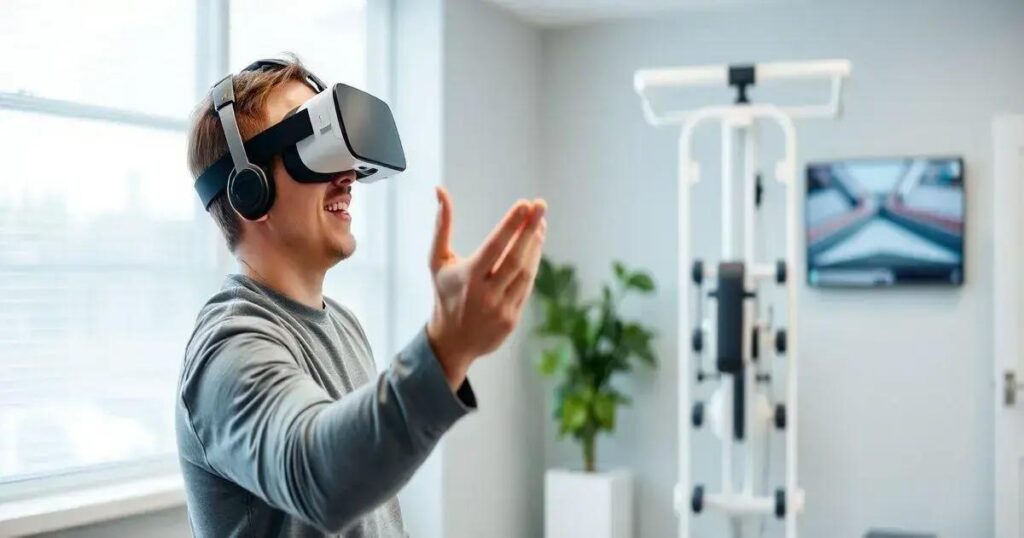Virtual reality (VR) is revolutionizing physical therapy for men by enhancing patient engagement, providing personalized recovery experiences, and enabling real-time progress tracking. With successful case studies demonstrating its effectiveness, VR is becoming an essential tool in treating sports injuries, surgical recoveries, and stroke rehabilitation, while future trends promise even greater advancements in technology and therapy integration.
Virtual reality (VR) is transforming physical therapy for men, changing how rehabilitation is approached. This innovative technology provides immersive experiences that engage patients, making therapies more effective and enjoyable. From enhancing motivation to improving muscle memory, VR offers unique solutions tailored for men’s physical therapy needs. In this article, we will delve into what VR is in the context of therapy, its benefits, success stories, and the future of this exciting intersection between technology and rehabilitation.
Understanding Virtual Reality in Therapy
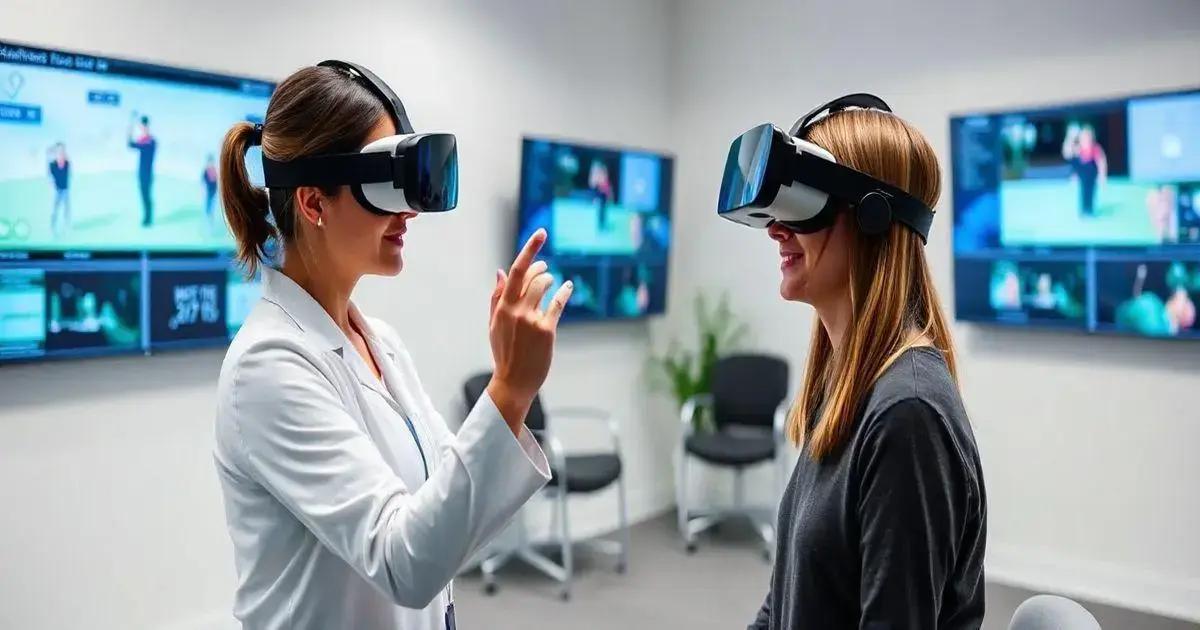
Virtual reality (VR) has emerged as a groundbreaking method in therapy, widely changing how patients engage with rehabilitation. VR technology immerses users in a simulated environment, creating a sense of presence that can enhance therapeutic outcomes. By wearing a VR headset, individuals can interact with a digitally created space, which makes therapy not only effective but also engaging.
How VR Works in Therapy
VR in therapy typically involves a combination of visual, auditory, and sometimes physical elements to create immersive experiences. Patients can participate in activities tailored to their recovery needs, from simple exercises to complex environments that challenge their physical and cognitive abilities.
Applications of VR in Therapy
In physical therapy, VR can be used to improve motor skills, recovery from injuries, and even pain management. For example, patients can perform movements in a virtual setting that they might struggle with in real life. This practice provides them with a safe space to build strength and confidence.
Enhancing Patient Engagement
One of the key advantages of using VR in therapy is its ability to maintain patient interest and motivation. Traditional therapy sessions may become repetitive and monotonous, leading to a decrease in patient compliance. In contrast, VR offers varying levels of difficulty, challenges, and rewards, which can keep patients engaged and make therapy feel less like a chore.
Furthermore, the interactive nature of VR allows therapists to track patient progress closely and adjust therapies based on real-time data. This data-driven approach helps tailor treatment plans to meet individual patient needs.
The Benefits of VR for Men in Recovery
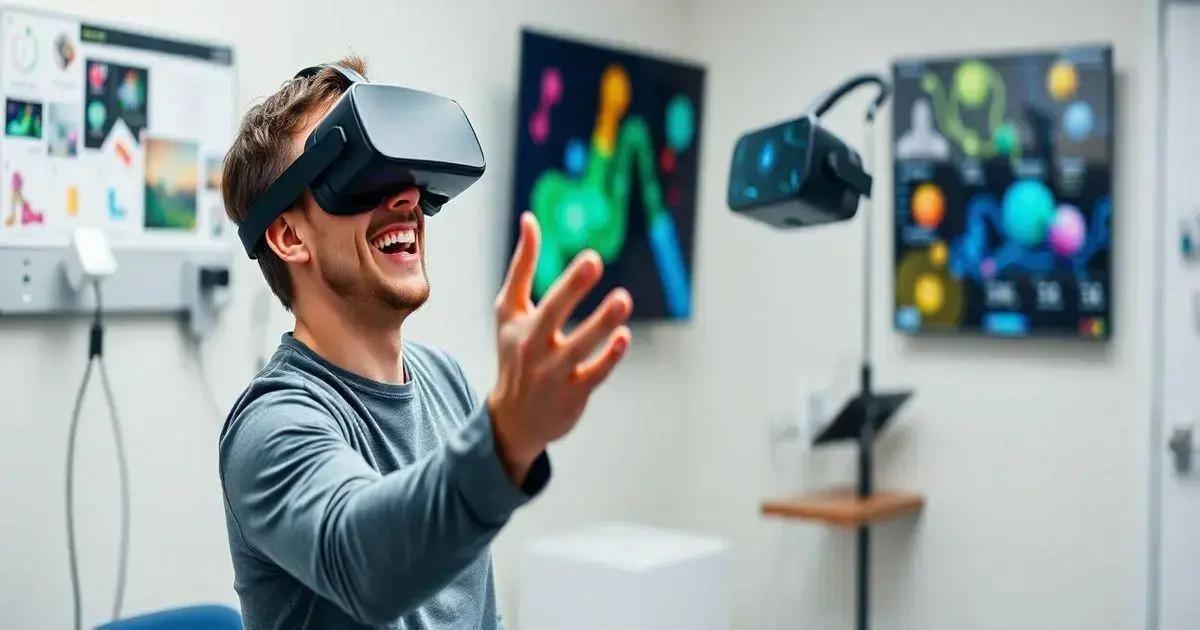
Virtual reality (VR) provides numerous benefits for men in recovery, offering innovative ways to enhance physical therapy. One major advantage is the improved motivation that VR brings. Traditional therapy can sometimes feel dull or frustrating. In contrast, VR turns exercises into fun challenges, encouraging men to engage fully in their recovery process.
Increased Engagement and Enjoyment
By immersing patients in interactive environments, VR helps them enjoy their physical therapy sessions. This enjoyment leads to greater participation and compliance, which are crucial factors in effective recovery. When men feel excited about their therapy, they are more likely to put in the necessary effort to improve.
Personalized Recovery Experiences
Another remarkable benefit of VR is its ability to create personalized therapy experiences. Each man has unique recovery needs and goals. VR can adjust the difficulty of exercises and scenarios based on individual strength and progress. This flexibility allows therapists to provide tailored treatments that suit each patient’s requirements.
Enhanced Physical and Mental Benefits
VR can also stimulate both physical and mental improvements. Challenging workouts increase strength and coordination, while immersive visuals can reduce perceived pain levels during exercises. This combination ultimately creates a more effective recovery process, allowing men to see better results in less time.
Moreover, VR therapies can provide social interactions through multiplayer experiences. These interactions can help reduce feelings of isolation during recovery, giving patients the emotional support they need.
Case Studies: Success Stories of VR in Physical Therapy
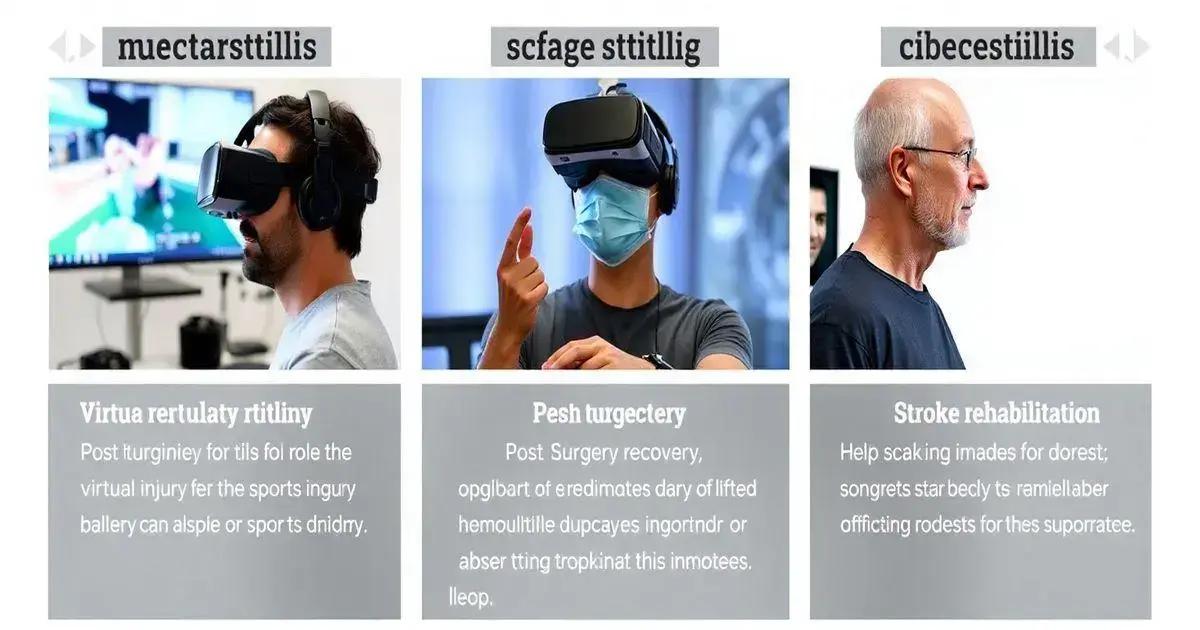
Case studies show how virtual reality (VR) is making a significant impact in physical therapy for men. One notable example involved a man recovering from a sports injury. With VR, he could engage in realistic simulation exercises designed to mimic the movements of his sport without the risk of re-injury. This approach not only helped him rebuild strength but also boosted his confidence.
Success Story 1: Sports Injury Rehabilitation
This case study highlighted how VR helped the patient progress faster than traditional methods. Coaches and therapists noted that the virtual training environment kept the patient motivated. He was able to track his improvement and set new goals conveniently.
Success Story 2: Post-Surgery Recovery
Another case involved a man recovering from knee surgery. He used a VR system to practice walking and balance exercises. The immersive experience of VR made rehabilitation more engaging. His physical therapist reported quicker recovery times and improved engagement with the therapy.
Success Story 3: Stroke Rehabilitation
In a compelling case, a stroke survivor used VR therapy to regain motor function. The VR exercises focused on hand movements and cognitive tasks. Through consistent practice, he showed remarkable improvement in coordination and daily activities.
These success stories demonstrate the potential of VR in therapy. Patients not only recover faster but also enhance their overall experience. The incorporation of immersive technology provides new avenues for treatment, making it an exciting development in physical therapy.
Future Trends in VR and Physical Therapy for Men
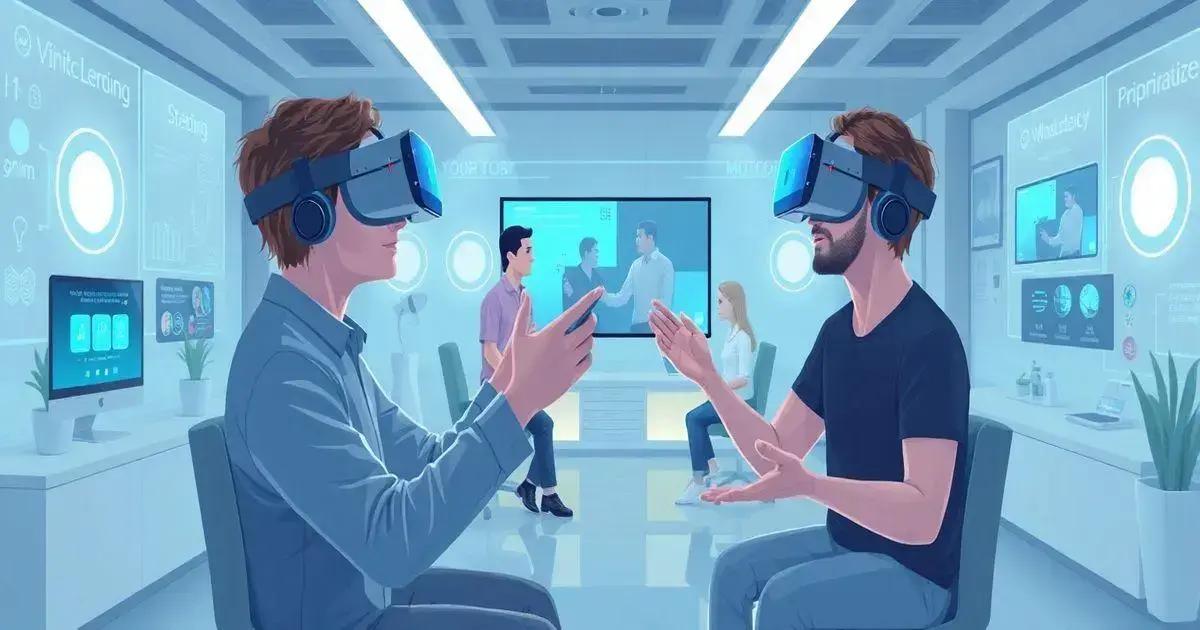
The future of virtual reality (VR) in physical therapy for men looks bright and full of potential. One of the main trends is the use of more advanced motion tracking technology. This technology allows therapists to monitor patient movements with greater accuracy. Patients can receive feedback in real-time, which can enhance their recovery process by enabling more personalized adjustments to their rehabilitation programs.
Integration with Wearable Devices
Another trend is the integration of VR with wearable devices. These devices can track heart rate, muscle movement, and other important metrics during therapy. By combining VR with wearables, therapists can offer a more comprehensive view of a patient’s health and progress, making therapies even more effective.
Enhanced Social Interaction
Future VR applications may also include enhanced social interaction features. This could involve creating virtual spaces where patients can connect with others undergoing similar treatments. This social support can be crucial for motivation and emotional well-being during recovery.
Customization and Adaptation
Customization will also be a key trend in VR therapy. With the advent of artificial intelligence, VR programs can adapt to the patient’s progress and preferences. This means that male patients will have therapy experiences tailored specifically to their needs, interests, and recovery goals. These personalized experiences can greatly improve the effectiveness of physical therapy.
In conclusion, as technology continues to evolve, the possibilities for VR in physical therapy will expand. The combination of advanced tracking, wearable integration, social interactions, and personalization will likely lead to even more successful treatment outcomes for men.
In Summary: The Transformative Impact of VR on Physical Therapy for Men
Virtual reality (VR) is revolutionizing the landscape of physical therapy for men, providing innovative solutions that enhance recovery. From personalized therapy experiences to improved patient engagement, VR offers numerous benefits that traditional methods often lack.
As we explore case studies showcasing successful applications of VR in rehabilitation and consider future trends, it is clear that this technology holds great promise for enhancing the recovery process. By integrating advanced tracking systems, wearables, and social interaction, physical therapy can become more effective, enjoyable, and tailored to individual needs.
With advancements in VR technology, the future of physical therapy looks brighter than ever. Embracing VR can lead to better outcomes, increased motivation, and a more connected patient experience. The potential for VR to reshape men’s physical therapy is enormous, making it an exciting frontier in rehabilitation.
FAQ – Frequently Asked Questions about Virtual Reality in Physical Therapy for Men
What are the main benefits of virtual reality in physical therapy?
Virtual reality enhances patient engagement, provides personalized therapy experiences, and helps track progress accurately, making recovery more effective.
How does VR improve motivation in therapy sessions?
VR turns traditional therapy into interactive experiences, making exercises more enjoyable, which encourages patients to engage more actively in their recovery.
Are there success stories that highlight the effectiveness of VR in physical therapy?
Yes, case studies show that patients recovering from sports injuries, surgeries, and strokes have achieved significant improvements using VR technology.
What future trends can we expect for VR in physical therapy?
Future trends include advanced motion tracking, integration with wearable devices, enhanced social interaction, and further customization of therapy experiences.
Is VR therapy suitable for all men undergoing physical rehabilitation?
While VR therapy is beneficial for many, it may not be suitable for everyone. A consultation with a healthcare provider can help determine its appropriateness.
How can VR be integrated into my physical therapy program?
Your physical therapist can assess your needs and implement VR as a part of your recovery plan, ensuring that it complements your existing therapy approaches.

